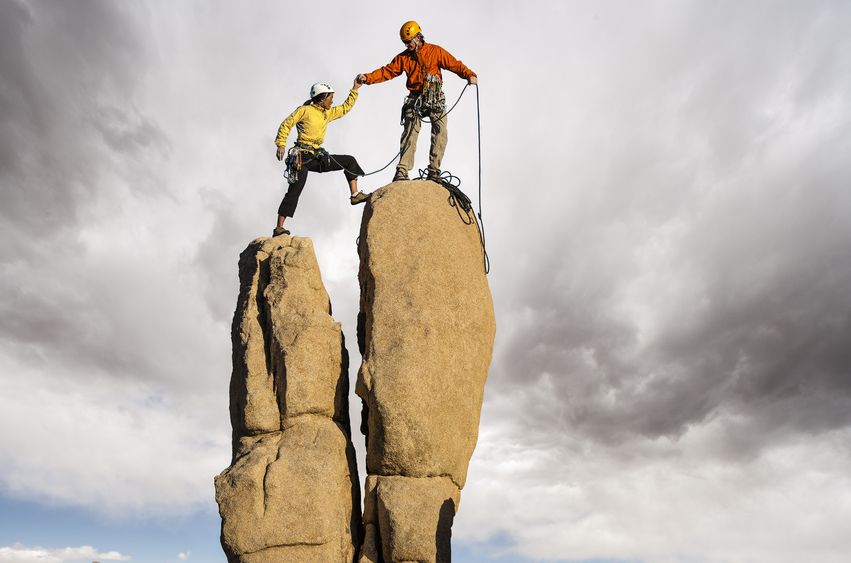Have you ever felt that nagging pull toward something deeper, something just beyond the edges of your everyday routine? I remember my own first brush with mysticism like it was yesterday. It was during a quiet weekend hike in the mountains, far from the buzz of city life. I’d always been the type who stuck to the familiar – coffee in the same mug, the same jogging path each morning. But that day, as the sun dipped low and painted the sky in fiery hues, I sat on a rock and just… breathed. No phone, no distractions. Suddenly, a profound sense of connection washed over me, like the world was whispering secrets I’d ignored for years. It scared me a little, honestly – stepping out of my comfort zone often does. But it also sparked a curiosity that led me down the path of exploring mysticism. This isn’t about chasing ghosts or joining a cult; it’s about venturing into the unknown realms of the spirit to uncover truths that logic alone can’t touch. In this article, we’ll dive deep into what mysticism really means, why pushing past your safe boundaries is key, and how you can start your own journey. We’ll cover practical steps, real-world examples, and even the pitfalls, all while keeping things grounded and relatable. Whether you’re a skeptic dipping a toe in or someone ready to plunge headfirst, let’s explore how going beyond the comfort zone can transform your inner world.
What is Mysticism?
Mysticism isn’t some dusty relic from ancient texts; it’s a living pursuit of direct, personal encounters with the divine or ultimate reality. At its core, it involves experiences that transcend ordinary perception, often leading to a sense of unity with something greater than yourself. Think of it as peeling back the layers of everyday life to touch the essence beneath – not through blind faith, but through intentional practices that quiet the mind and open the heart.
Historical Roots of Mysticism
The seeds of mysticism were planted in ancient civilizations, from the shamanic rituals of indigenous tribes to the mystery cults of Greece like the Eleusinian Mysteries. These early practices aimed at altered states of consciousness to connect with the unseen, evolving over centuries into structured spiritual paths. By the medieval era, figures like Hildegard of Bingen were channeling visions that blended faith with profound insight, showing how mysticism has always pushed humanity to question the visible world.
Mysticism in Major Religions
Across faiths, mysticism manifests as a quest for inner union – in Christianity through contemplative prayer, in Sufism via ecstatic dance, and in Hinduism with yoga’s path to enlightenment. It’s not about dogma but personal transformation, where believers seek direct communion beyond rituals. This shared thread highlights mysticism’s universal appeal, inviting practitioners to experience the divine firsthand rather than through intermediaries.
| Tradition | Key Practices | Core Goal | Notable Figures |
|---|---|---|---|
| Christian Mysticism | Contemplative prayer, silence | Union with God (theosis) | Teresa of Avila, John of the Cross |
| Islamic Sufism | Dhikr (remembrance), whirling dervishes | Annihilation of self in divine love | Rumi, Al-Ghazzali |
| Hindu Mysticism | Yoga, meditation on chakras | Moksha (liberation from illusion) | Patanjali, Adi Shankara |
| Buddhist Mysticism | Vipassana, koan study | Realization of emptiness (sunyata) | Dalai Lama, Dogen |
| Jewish Kabbalah | Study of Tree of Life, meditation | Communion with Ein Sof (infinite) | Isaac Luria, Baal Shem Tov |
Why Go Beyond the Comfort Zone in Mysticism?
Stepping outside your familiar bubble is the gateway to mysticism because true insight rarely hides in the predictable. Our comfort zones are cozy traps of routine and logic, but mysticism thrives in the unfamiliar, where vulnerability meets wonder. It’s like upgrading from a kiddie pool to the ocean – daunting, yet full of hidden depths that reshape how you see yourself and the world.
The Role of Discomfort in Spiritual Growth
Discomfort acts as a catalyst, stripping away ego and illusions to reveal raw truth. When you push boundaries, like in a silent retreat, the initial unease gives way to breakthroughs, fostering resilience and deeper self-awareness. It’s not masochism; it’s the forge where ordinary awareness transforms into mystical perception.
Personal Stories of Transformation
I once joined a meditation workshop on a whim, expecting relaxation but facing hours of silence that stirred up buried emotions. At first, it felt like wrestling a storm inside, but by the end, a quiet clarity emerged – a glimpse of interconnectedness that changed my daily outlook. Stories like this abound; think of Sadhguru’s teachings on embracing the unknown, where seekers find joy in the leap beyond safety.
- Embracing Uncertainty: Logic clings to the known, but mysticism blooms in ambiguity, teaching adaptability.
- Building Inner Strength: Facing fears head-on, like in breathwork sessions, cultivates emotional fortitude.
- Fostering Connection: Stepping out isolates at first but ultimately links you to a broader human tapestry.
- Igniting Creativity: Discomfort sparks innovative insights, as seen in artists inspired by mystical visions.
With a dash of humor, remember: if mysticism was easy, everyone would be enlightened by now – but where’s the fun in that without a little soul-stretching adventure?
Practices to Explore Mysticism
Diving into mysticism starts with simple, intentional actions that quiet the noise of daily life. These aren’t one-size-fits-all; experiment to find what resonates, always with an open yet discerning mind. The key is consistency, turning sporadic tries into a lifelong dialogue with the profound.
Meditation and Contemplation Techniques
Meditation strips away distractions, allowing glimpses of unity beyond the self. Start with breath focus or mantra repetition, building to longer sessions where thoughts dissolve into presence. Contemplation, like pondering a sacred text, deepens this, inviting intuitive wisdom to surface naturally.
Rituals and Retreats for Deeper Immersion
Rituals, from lighting incense to chanting, create sacred space for mystical encounters. Retreats amplify this, offering immersion away from routines – think silent weekends or guided workshops. They push boundaries, blending community support with personal exploration for transformative shifts.
Pros of Mystical Practices:
- Enhances self-awareness and emotional balance.
- Fosters a sense of peace amid chaos.
- Builds community with like-minded seekers.
- Can lead to profound, life-altering insights.
Cons of Mystical Practices:
- Risk of emotional overwhelm if not grounded.
- Potential for misinterpretation without guidance.
- Time-intensive, clashing with busy schedules.
- May attract skepticism from friends or family.
Benefits and Risks of Mystical Exploration
Exploring mysticism offers rewards like expanded consciousness, but it’s not without hazards – balance is crucial. Benefits often include heightened empathy and purpose, while risks might involve psychological strain if pursued recklessly. Approach with curiosity tempered by wisdom for the safest path.
Health and Well-Being Advantages
Mystical pursuits can reduce stress, boost mental clarity, and even improve physical health through practices like yoga. Emotionally, they nurture compassion, helping navigate life’s ups and downs with grace. Spiritually, they provide a wellspring of meaning, turning mundane moments into sacred ones.
Potential Pitfalls and How to Avoid Them
Risks include detachment from reality or falling into dogmatic traps; counter this with grounded routines and critical thinking. Overzealous pursuit might lead to burnout – pace yourself, seek mentors, and integrate experiences gradually to maintain equilibrium.
| Benefit | Risk | Mitigation Strategy |
|---|---|---|
| Increased Empathy | Emotional Vulnerability | Journal reflections regularly |
| Deeper Purpose | Isolation from Others | Join supportive communities |
| Stress Reduction | Misguided Beliefs | Study diverse sources |
| Creative Inspiration | Psychological Strain | Consult professionals if needed |
Humor aside, mysticism isn’t a magic pill – it’s more like a spicy curry that awakens your senses, but eat too fast and you might get heartburn.
How to Start Your Mystical Journey
Beginning doesn’t require a guru or exotic trip; start small in your own space with curiosity as your guide. Read, reflect, and practice – it’s a personal evolution, not a race. Soon, the unfamiliar will feel like home, revealing layers you never knew existed.
Essential Tools and Resources
Gather basics like a journal for insights, comfortable cushions for meditation, or apps for guided sessions. Books provide foundations; communities offer support. Remember, the best tool is your willingness to explore without judgment.
- Read Beginner-Friendly Books: “The Power of Now” by Eckhart Tolle demystifies presence; “Mysticism: A Study in the Nature and Development of Spiritual Consciousness” by Evelyn Underhill offers historical depth.
- Join Workshops: Look for local meditation classes or online sessions via platforms like Insight Timer.
- Attend Retreats: Places like Omega Institute host spirituality workshops; or try Siena Retreat Center for mystic-focused weekends.
- Find Communities: Online forums on Reddit’s r/mysticism or local meetups via Meetup.com connect seekers.
For navigational help, check resources like the Center for Action and Contemplation (cac.org) for guides on mystical paths. Internally, explore our section on meditation techniques for more.
People Also Ask
This section tackles common queries from Google searches, drawing on real user curiosities to clarify mysticism’s nuances.
What is the definition of mysticism?
Mysticism refers to the pursuit of direct communion with ultimate reality through experiences that transcend ordinary senses, often involving unity or altered consciousness. It’s found across religions but emphasizes personal transformation over doctrine. In essence, it’s the art of experiencing the divine firsthand.
Why do people believe in mysticism?
People turn to mysticism for deeper meaning beyond material life, seeking answers to existential questions through personal encounters. It offers solace in uncertainty, fostering growth and connection in a fragmented world. Skeptics might dismiss it, but believers find empirical truth in their experiences.
How close is philosophy to mysticism?
Philosophy and mysticism overlap in questioning reality, but philosophy relies on reason while mysticism leans on direct experience. Thinkers like Plotinus bridged them, showing how logic can lead to transcendent insights. They’re companions, not rivals, in the quest for truth.
Is mysticism dangerous?
Mysticism can pose risks like psychological distress if unguided, but with balance, it’s enriching. Approach mindfully to avoid extremes; it’s like fire – warm and illuminating when handled well.
FAQ
What are some beginner practices for exploring mysticism?
Start with daily meditation for 10 minutes, focusing on breath to quiet the mind. Incorporate journaling to reflect on insights, and try simple rituals like lighting a candle for intention-setting. Gradually build to reading foundational texts for deeper understanding.
How does mysticism differ from religion?
Religion often involves organized beliefs and rituals, while mysticism focuses on personal, direct experiences of the divine. It’s the experiential core within religions, transcending dogma to emphasize inner union and transformation.
Can anyone experience mysticism?
Yes, mysticism isn’t reserved for saints or gurus; it’s accessible to all with openness and practice. Everyday people report profound moments during nature walks or quiet reflection – it’s about tuning in, not special gifts.
What are the best retreats for mysticism beginners?
Consider entry-level options like the Ecstatic Mysticism program or Siena Retreat Center’s Ordinary Mystic weekends. For affordability, local yoga retreats or online workshops from BookRetreats.com provide gentle introductions without overwhelming commitment.
Is there scientific evidence for mystical experiences?
Studies in neuroscience, like those on meditation’s brain effects, show reduced stress and altered states akin to mysticism. While subjective, research from Psychology Today links it to well-being, blending science with spirituality.
Venturing into mysticism beyond your comfort zone isn’t just an adventure – it’s a homecoming to your truest self. I’ve shared my stumbles and epiphanies here, hoping they light your path. Remember, the journey unfolds one step at a time, rich with wonder if you dare to leap. For more, visit Wikipedia on Mysticism or our guide on spiritual practices. What’s your first step?








